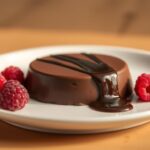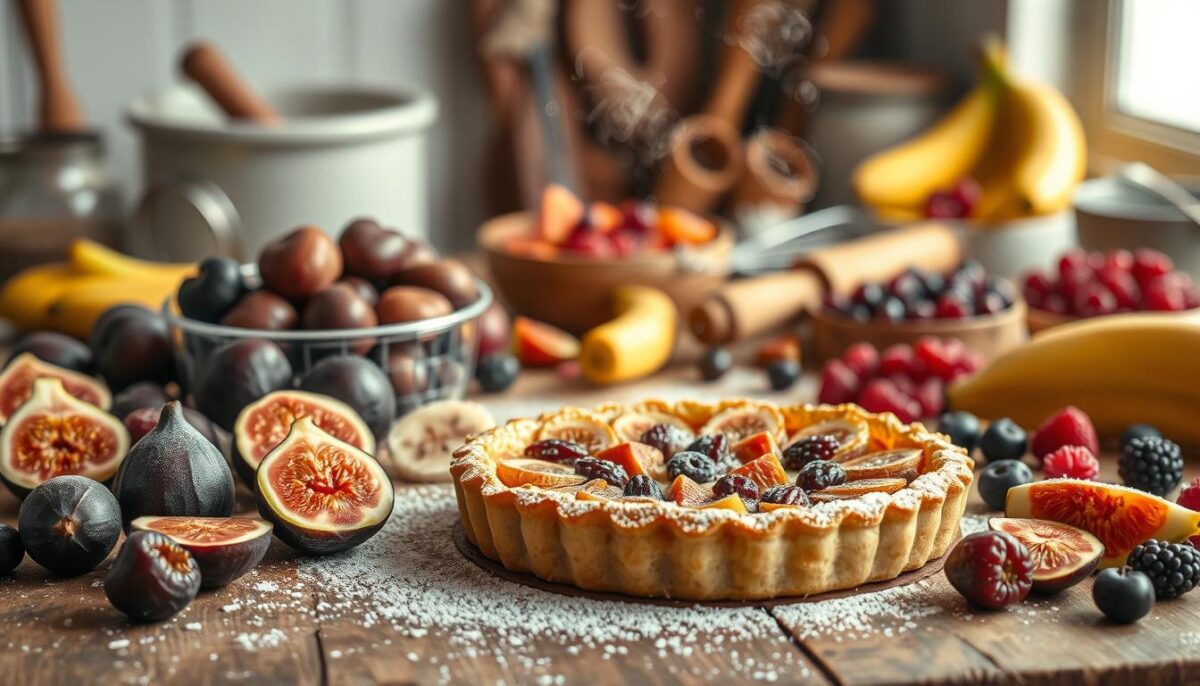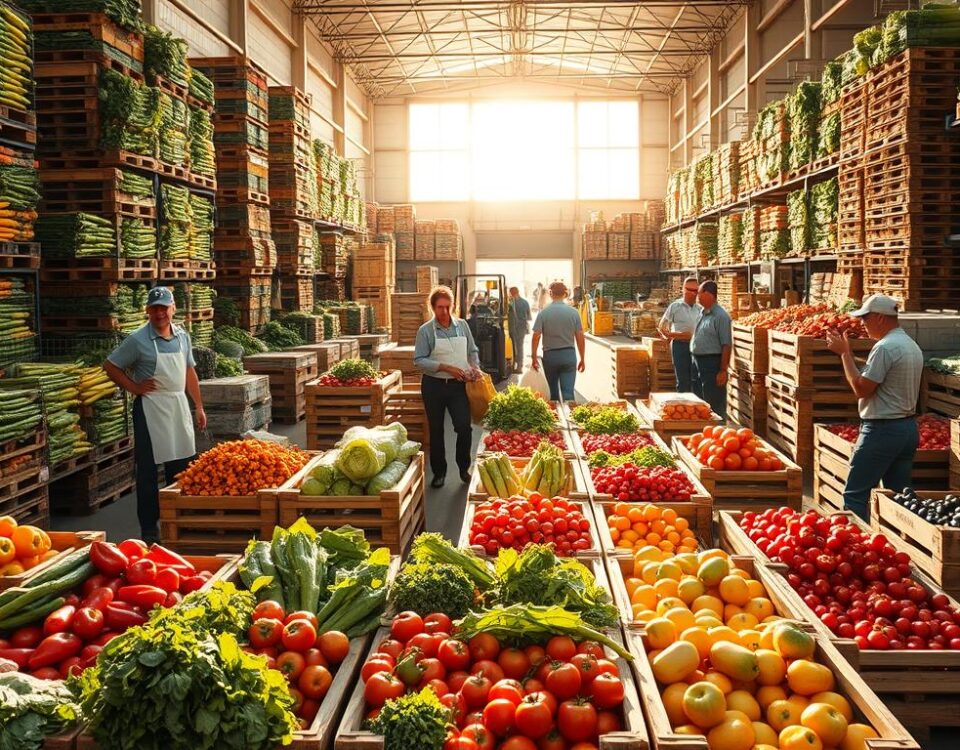
Top 5 Low-Calorie Dessert Recipes That Actually Taste Good
May 28, 2025
What to Make When You Want Dessert but Not the Calories
May 28, 2025Did you know the average American eats 57 pounds of added sugar annually? That’s like devouring a golden retriever’s weight in sweetness every year! When I first heard this, I stared at my cookie jar differently. My journey into healthier desserts began when I realized my energy crashes and restless nights traced back to sugar-heavy recipes.
Switching to ingredients like dates and bananas wasn’t just about cutting sugar—it became a flavor adventure. I’ll never forget the first time I bit into a fudgy brownie sweetened purely with dates. The rich caramel notes made me wonder why I ever relied on processed sugar. Even Bon Appétit agrees: fruit-based alternatives can “transform textures while keeping treats wholesome.”
But here’s the truth: replacing sugar isn’t as simple as swapping cups. I’ve had muffins turn into hockey pucks and cookies crumble like sandcastles. Through trial (and lots of errors!), I discovered how to balance moisture, sweetness, and structure. Forks Over Knives’ research on date paste’s binding power became my secret weapon.
Now, I’m excited to share everything I’ve learned. Whether you’re craving gooey blondies or fluffy banana bread, this guide will help you create desserts that nourish and delight. Let’s redefine what “sweet” means in your kitchen!
Key Takeaways
- Cutting refined sugar can boost energy and improve sleep quality
- Dates add caramel-like depth, while bananas provide natural moisture
- Fruit-based sweeteners enhance flavor complexity in baked goods
- Expert-backed methods prevent common texture issues
- Simple ingredient swaps make classic recipes healthier
Getting Started with Natural Sweeteners
It started with a cake that tasted like guilt—and a pantry full of alternatives. My early baking days revolved around sticks of butter and bags of white crystals. Then came the headaches after dessert, the sugar crashes that felt like elevator drops. Something had to change.
My Journey to Healthier Baking
I remember staring at a muffin recipe calling for ¾ cup sugar. What if I used mashed bananas instead? My first attempt looked like volcanic rock. But the flavor—oh, the flavor! Ripe fruit brought a complexity refined sugar never could. Bigger Bolder Baking’s tip became my mantra: “Start with small swaps and adjust textures as you go.”
Why I Chose Dates and Bananas
Dates won me over during a energy bar experiment. Their sticky sweetness clung to oats better than honey. When I compared nutrition labels, the choice was clear: whole fruits delivered fiber and minerals alongside sweetness. My ingredients list transformed from pantry staples to kitchen alchemy.
That first banana cake taught me precision matters. I learned to measure purees by weight, not volume. Now, when adapting a recipe, I use date paste as a 1:1 swap. It binds doughs while adding caramel notes that make people ask, “What’s your secret?” The answer’s simple: let fruit do the talking.
The Sweet Benefits of Dates and Bananas
Discovering dates and bananas transformed my desserts from sugary to nutrient-packed. These fruits don’t just sweeten—they bring layers of flavor and hidden perks I never expected. Let me show you why they’re now my kitchen staples.
Nutritional Advantages
Forks Over Knives highlights that dates deliver 3x more potassium than bananas per serving. I started tracking how these swaps affected my energy. Unlike refined sugar crashes, desserts with mashed bananas kept me satisfied for hours. Here’s what won me over:
| Nutrient | Dates | Bananas | Refined Sugar |
|---|---|---|---|
| Fiber | 7g per 100g | 3g per 100g | 0g |
| Vitamins | B6, Iron | C, Potassium | None |
| Natural Sugars | 63g | 12g | 99.9g |
Bon Appétit nailed it: “Fruit-based sweetness adds complexity while cutting empty calories.” My blueberry muffins prove this—using bananas slashed sugar by 40% while boosting moisture.
Flavor Enhancements in Every Bite
Dates became my secret weapon for rich, earthy notes. In brownies, they mimic molasses depth without overpowering cocoa. Bananas? They give cakes a buttery undertone I crave. During blind tastings, friends guessed I’d added chocolate chips to my banana bread—it was just the fruit’s natural richness!
Here’s the kicker: these ingredients stabilize blood sugar better than table sugar. My post-dessert energy stays steady, and the flavor payoff keeps everyone asking for seconds. Want both taste and health? Let dates and bananas lead the way.
Natural sweetener baking guide: Exploring Alternatives
My kitchen became a science lab when I branched out beyond dates and bananas. While those fruits work wonders, other options like maple syrup and coconut sugar opened new flavor dimensions. Let’s explore these pantry heroes and their unique superpowers.

Understanding Other Sweetener Options
Through trial runs with 12 different ingredients, I discovered each option brings distinct traits. Here’s what food scientists and pastry chefs emphasize:
- Maple syrup adds earthy notes but requires reducing other liquids
- Coconut sugar caramelizes beautifully in cookies
- Molasses delivers iron but can overpower delicate flavors
Bon Appétit’s test kitchen notes: “Liquid sweeteners like syrup change batter chemistry—adjust flour ratios by 15% for best results.” My pancake experiments proved this—too much maple syrup made them gummy.
Comparing Maple Syrup, Coconut Sugar, and More
Let’s break down popular choices:
| Sweetener | Best For | Watch Out |
|---|---|---|
| Maple Syrup | Granola, glazes | High moisture content |
| Coconut Sugar | Crumb toppings | Grainy texture |
| Brown Sugar | Chewy cookies | Partial refinement |
Forks Over Knives praises coconut sugar’s mineral content, but I found it burns faster than regular sugar. When substituting 1:1 in banana bread, it created a crispier crust—perfect for texture lovers!
My golden rule? Match the sweetener to your recipe’s personality. As one pastry chef told me: “There’s no MVP—only the right player for each culinary game.”
Replacing Refined Sugar: Techniques and Tips
Picture this: you’re ready to bake cookies, but the sugar jar’s empty. Don’t panic—this is your chance to shine. Through countless kitchen trials, I’ve nailed methods to swap processed crystals with fruit-based options without sacrificing texture. Let’s turn those “oops” moments into “aha” victories.
1:1 Substitution Methods in Recipes
Measure smarter, not harder. Bigger Bolder Baking taught me to use weight measurements for purees. For every cup of sugar, try ¾ cup date paste or mashed banana. Why? Fruit adds moisture—reduce other liquids by 2 tablespoons to balance it.
Bon Appétit’s pastry team warns: “Overloading batter with alternatives creates gummy textures.” My chocolate chip cookie disaster proved this. Now I mix 50% date paste with 50% coconut sugar for chewiness. The result? Crispy edges with soft centers.
Three golden rules from my notebook:
- Blend dates into smooth paste to avoid chunks
- Add ¼ tsp baking soda per cup of banana puree
- Bake at 25°F lower to prevent over-browning
Last week, I converted a classic coffee cake using these tips. The secret? Replace sugar 1:1 with date paste, but cut oil by 20%. My neighbor swore it tasted better than the original. That’s the magic of fruit’s natural complexity!
Mastering Texture and Moisture in Sugar-Free Baking
I once pulled a cake from the oven that crumbled like autumn leaves. That’s when I realized: perfect texture in sugar-free treats requires more than good intentions. Through sticky failures and surprising successes, I discovered how fruit-based alternatives behave differently than refined sugar.

Achieving the Ideal Consistency
Bigger Bolder Baking taught me this golden rule: “Moisture balance is everything.” For every cup of mashed banana, I reduce other liquids by 2 tablespoons. My go-to trick? Adding applesauce or yogurt boosts tenderness without making batters soggy.
Here’s what transformed my results:
- Preheating ovens 15°F lower prevents over-drying
- Mixing coconut flour with almond flour creates airy crumbs
- Letting batter rest 10 minutes hydrates dry ingredients fully
Bon Appétit’s test kitchen confirmed my discovery: “Fruit purees work best when paired with binding agents like chia seeds.” Now I add 1 tsp per cup of date paste—no more crumbly cookies!
| Issue | Quick Fix | Tool |
|---|---|---|
| Dry cakes | +2 tbsp coconut oil | Toothpick test |
| Dense bread | Fold in whipped egg whites | Hand mixer |
| Gummy centers | Bake 5 minutes longer | Oven thermometer |
Last week, I nailed fluffy pancakes using mashed banana and oat flour. The secret? Sifting dry ingredients twice for lighter texture. It’s these small tweaks that turn good baking into greatness—one delicious experiment at a time.
Creative Recipes and Experimentation in Baking
Have you ever stared at a recipe and thought, “What if I swapped sugar for something wilder?” That’s where the magic happens. My kitchen adventures led to surprises like chili-spiced date truffles and banana-oat cookie dough bites. Bigger Bolder Baking’s blueberry crumble bars inspired me to play with unexpected pairings—and now I’m hooked.

Innovative Recipe Ideas and Modifications
Let’s flip classic treats. Forks Over Knives’ black bean brownies became my canvas—I replaced sugar with date syrup and added orange zest. The result? A citrusy twist that made taste buds dance. Three rules I live by:
- Use mashed banana as a binder in energy balls instead of honey
- Mix date paste with palm sugar for layered flavors
- Add roasted apples to muffin batter for natural moisture
My favorite hack? Swapping ¼ cup flour with almond meal in banana bread. It adds nuttiness while keeping slices tender. Tip: Reduce oven temps by 15°F when using liquid alternatives—they caramelize faster!
Balancing Sweetness with Nutrition
Healthier doesn’t mean bland. I balance fruity sweetness with textures and spices. Check this quick guide:
| Recipe | Swap | Benefit |
|---|---|---|
| Chocolate Cake | Date puree + cocoa | 50% less sugar, richer taste |
| Oatmeal Cookies | Palm sugar + walnuts | Crunchy texture, iron boost |
| Lemon Bars | Banana + chia seeds | Added omega-3s, creamy filling |
Remember: fruits bring their own sugars. I balance them with tart ingredients like Greek yogurt or lime juice. Last week, I made passionfruit-date thumbprint cookies—tangy meets sweet in every bite.
Ready to experiment? Start with small swaps and tweak fearlessly. Share your wildest creations—I’d love to taste your kitchen genius!
Conclusion
Transforming desserts into nutrient-rich treats became my passion once I discovered fruits’ hidden powers. Swapping refined sugars for dates and bananas wasn’t just about health—it unlocked flavors I never knew existed. As Bigger Bolder Baking experts note, “The right substitutions turn guilt into glory.”
Maple syrup’s earthy depth and coconut sugar’s caramel notes now star in my recipes, proving alternatives can outshine traditional sugars. Forks Over Knives’ research confirms what my energy levels show: these swaps deliver nutrients without blood sugar spikes. Even classics like chocolate cake gain complexity when sweetened with date paste instead of white crystals.
Start small—replace half the sugar in cookies with mashed banana, or try molasses in gingerbread. Every tweak teaches something new. My kitchen disasters? They’re just stepping stones to better baking.
I’d love to hear your creations! Share how you’re reinventing recipes with these sweet heroes. Together, let’s prove treats can taste incredible and feel nourishing—one smart swap at a time.
FAQ
Why should I use dates and bananas instead of regular sugar?
I love them because they add nutrients like potassium and fiber while keeping treats moist. Plus, their natural sweetness feels richer than plain white sugar.
Can I swap maple syrup or coconut sugar 1:1 for refined sugar?
Yes! I do this often. Just reduce other liquids slightly with syrups. Coconut sugar works like brown sugar but has a caramel-like depth.
How do I keep baked goods from getting dry without sugar?
Mashed bananas or date paste lock in moisture. I also add a splash of applesauce or yogurt if the batter feels too thick.
What’s the best way to balance sweetness and nutrition?
I mix sweeteners. For example, mashed bananas with a touch of honey lets me cut back on overall sugar while boosting flavor.
Are there recipes where dates or bananas won’t work well?
Delicate pastries might not hold up, but I’ve nailed banana-based cookies and date-sweetened energy bars. Experimentation is key!
Does using fruit change the baking time?
Sometimes. Moist ingredients like bananas can mean longer bake times. I start checking 5-10 minutes earlier and adjust as needed.



